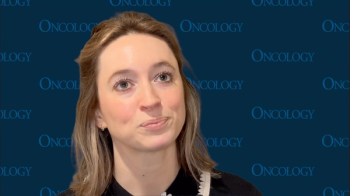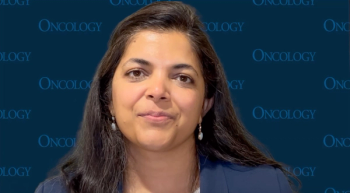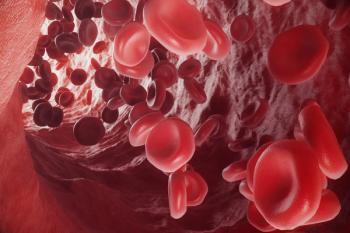
Oncology NEWS International
- Oncology NEWS International Vol 17 No 2
- Volume 17
- Issue 2
Good nilotinib responses in imatinib-resistant AP-CML
Among Ph+ chronic myelogenous leukemia patients in accelerated phase with imatinib (Gleevec) resistance or intolerance, treatment with nilotinib (Tasigna) rapidly produced significant responses and was generally well tolerated in an open-label pivotal phase II study
ATLANTAAmong Ph+ chronic myelogenous leukemia patients in accelerated phase with imatinib (Gleevec) resistance or intolerance, treatment with nilotinib (Tasigna) rapidly produced significant responses and was generally well tolerated in an open-label pivotal phase II study. Philipp le Coutre, MD, of Charite Campus Virchow Klinikum, Berlin, reported the results at ASH 2007 (abstract 471). The study included 136 patients whose median CML duration was 71 months: 80% were imatinib resistant and 20% were imatinib intolerant.
Among the patients who completed at least one nilotinib cycle, Dr. le Coutre said, the hematologic response rate was 54% overall: 53% for imatinib-resistant patients and 56% for imatinib-intolerant patients. The complete hematologic response rate was 26%. At 12 months, hematologic responses were sustained in 82%. Major cytogenetic responses were seen in 31% (29% imatinib-resistant, 40% imatinib-intolerant), with complete cytogenetic responses in 19%. Overall survival at 12 months was 81%.
Median exposure to nilotinib was 210 days, and the median dose intensity was 781 mg/d. "The fact that the dose intensity is so close to the intended dose indicates how well tolerated this compound is," he said. However, 49% of patients required median dose interruptions of 22 days.
Nilotinib was generally well tolerated. with low rates of grade 3-4 myelosuppression. "Most grade 3-4 myelosuppression occurred within the first cycle," he said.
Dr. le Coutre concluded, "Nilotinib is an effective therapeutic option in this advanced CML population." Major cytogenetic response rates continue to increase with longer follow-up without changes in safety profile, he added.
Articles in this issue
almost 18 years ago
NLST article not balanced, critic of screening trial assertsalmost 18 years ago
M.D. Anderson and AstraZeneca form neuropathic pain alliancealmost 18 years ago
Virus linked to Merkel cell carcinomaalmost 18 years ago
Benefit of adjuvant RT/CT for pancreatic ca affirmedalmost 18 years ago
Recurrence Score helps select node+ pts for chemoalmost 18 years ago
For resectable liver mets: Preop chemotherapy or not?almost 18 years ago
Plerixafor boosts stem cell mobilization in myeloma ptsalmost 18 years ago
MRI shows second-hand smoke damagealmost 18 years ago
Assay has high sensitivity for hard-to-detect SLN metsalmost 18 years ago
Dasatinib effective in imatinib resistant/intolerant CMLNewsletter
Stay up to date on recent advances in the multidisciplinary approach to cancer.
















































































